Advertisements
Advertisements
प्रश्न
In the below fig. ABCD and AEFD are two parallelograms. Prove that
(1) PE = FQ
(2) ar (Δ APE) : ar (ΔPFA) = ar Δ(QFD) : ar (Δ PFD)
(3) ar (ΔPEA) = ar (ΔQFD)
उत्तर
Given that, ABCD and AEFD are two parallelograms
To prove: (1) PE = FQ
(2) `"ar (ΔAPE)"/ "ar (ΔPFA)"` = `"ar (ΔQFD)"/"ar (ΔPED)"`
(3) ar (ΔPEA) = ar (ΔQFD)
Proof: (1) In ΔEPA and ΔFQD
∠PEA = ∠QFD [ ∴ Corresponding angles]
∠EPA = ∠FQD [Corresponding angles]
PA = QD [opp .sides of 11gm]
Then, ΔEPA ≅ ΔFQD [By. AAS condition]
∴ EP = FQ [c. p. c.t]
(2) Since, ΔPEA and ΔQFD stand on the same base PEand FQlie between the same
parallels EQ and AD
∴ ar (ΔPEA ) = ar (ΔQFD) → (1)
AD ∴ ar (ΔPFA) = ar (PFD) .....(2)
Divide the equation (1) by equation (2)
`"area of (ΔPEA)"/"area of (ΔPFA)"` = `"ar Δ(QFD)"/"ar Δ(PFD)"`
(3) From (1) part ΔEPA ≅ FQD
Then, ar (ΔEDA) = ar (ΔFQD)
APPEARS IN
संबंधित प्रश्न
In the given figure, ABCD is parallelogram, AE ⊥ DC and CF ⊥ AD. If AB = 16 cm, AE = 8 cm and CF = 10 cm, find AD.
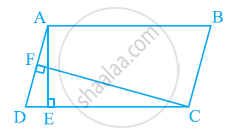
If E, F, G and H are respectively the mid-points of the sides of a parallelogram ABCD show that ar (EFGH) = 1/2ar (ABCD)
P and Q are any two points lying on the sides DC and AD respectively of a parallelogram ABCD. Show that ar (APB) = ar (BQC).
In the given figure, P is a point in the interior of a parallelogram ABCD. Show that
(i) ar (APB) + ar (PCD) = 1/2ar (ABCD)
(ii) ar (APD) + ar (PBC) = ar (APB) + ar (PCD)
[Hint: Through. P, draw a line parallel to AB]
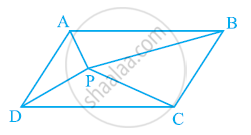
Parallelogram ABCD and rectangle ABEF are on the same base AB and have equal areas. Show that the perimeter of the parallelogram is greater than that of the rectangle.
In the following figure, ABCD, DCFE and ABFE are parallelograms. Show that ar (ADE) = ar (BCF).
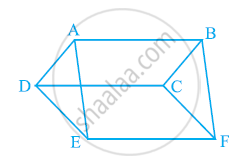
ABCD is a square. E and F are respectively the mid-points of BC and CD. If R is the mid-point of EF (Figure), prove that ar (AER) = ar (AFR)
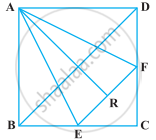
ABCD is a parallelogram in which BC is produced to E such that CE = BC (Figure). AE intersects CD at F. If ar (DFB) = 3 cm2, find the area of the parallelogram ABCD.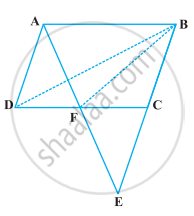
The diagonals of a parallelogram ABCD intersect at a point O. Through O, a line is drawn to intersect AD at P and BC at Q. Show that PQ divides the parallelogram into two parts of equal area.
ABCD is a trapezium in which AB || DC, DC = 30 cm and AB = 50 cm. If X and Y are, respectively the mid-points of AD and BC, prove that ar (DCYX) = `7/9` ar (XYBA)
